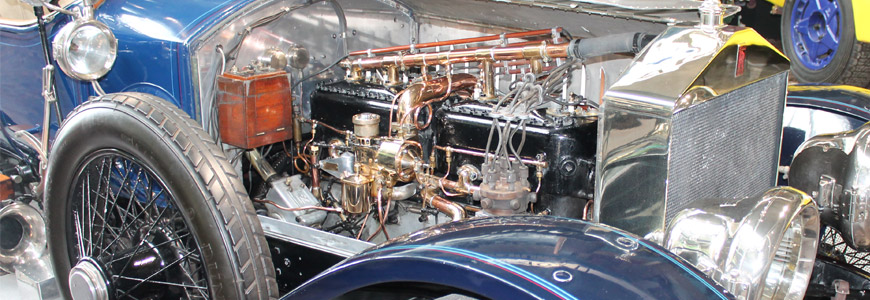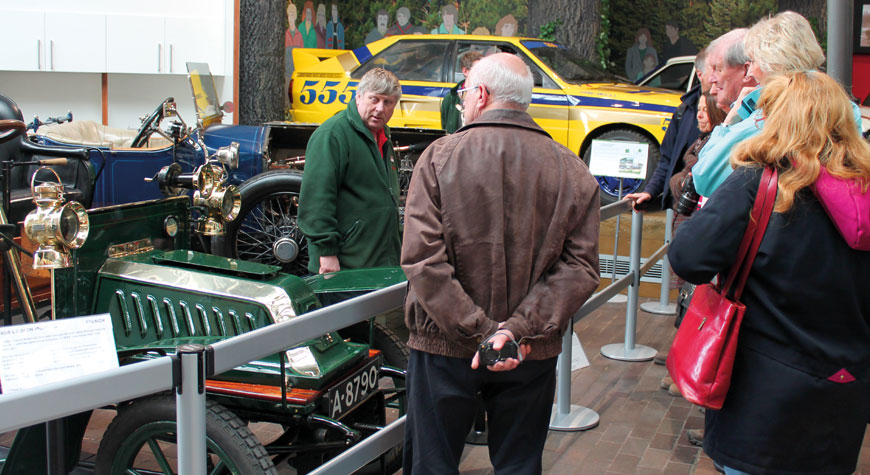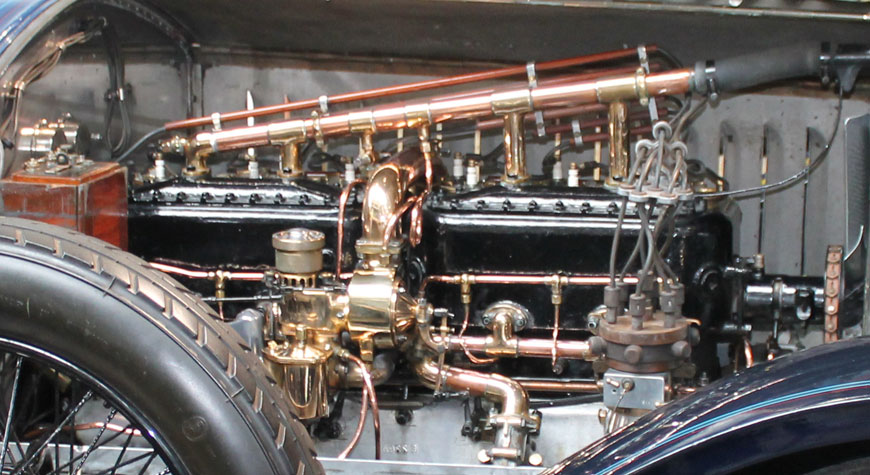
Although we take easy-starting engines for granted in modern cars, it wasn’t always so easy to convince an engine to run. Before contemporary ignition and fuel system technology, different engineering solutions were called for.
Start-Up Area

In the new Start-Up Area in the National Motor Museum, visitors can now watch as vehicles from the museum’s collection roar into life. The workshop technicians explain the history and construction of the day’s chosen vehicle, such as the 1930 ‘Blower’ Bentley 4.5-litre or the 1914 Rolls-Royce Alpine Eagle, before demonstrating its starting procedure.
As an opportunity to see and hear these memorable machines working as they were intended, this part of the new motor sport display, A Chequered History, has already become a favourite feature with many visitors.
Ignition Inspiration
As a sporting version of the legendary Silver Ghost, the museum’s 1914 Rolls-Royce Alpine Eagle is a highly sophisticated machine. However, starting its engine isn’t simply a case of turning an ignition key. As with most cars of the same era, it is equipped with a starting handle.

Due to its sheer size, turning the 7428cc six-cylinder engine over fast enough to start it is no mean feat. This is hindered by the use of a magneto for ignition. At lower speeds, the magneto cannot produce a sufficiently powerful spark at the plugs in order to start the engine, meaning that the engine has to be turned faster than can be managed by hand using the starting handle.
Instead, the engine is turned over by hand five times or so, in order to draw the fuel-air mix into the cylinders, before the trembler coil system is switched on. Powered by the car’s battery and connected to a secondary set of spark plugs, this provides a burst of electricity to each cylinder in turn, igniting the fuel-air mix and turning over the engine.
As the engine speed increases, the magneto is able to produce a spark powerful enough to run the engine. The trembler coil system is turned off, saving the battery, while the magneto takes over. Although the magneto is able to produce enough power to provide ignition, it is not able to re-charge the battery.
The Start-Up Area demonstrates the National Motor Museum’s philosophy of keeping motoring history alive, by ensuring that many of the cars in the collection are kept in working order.
